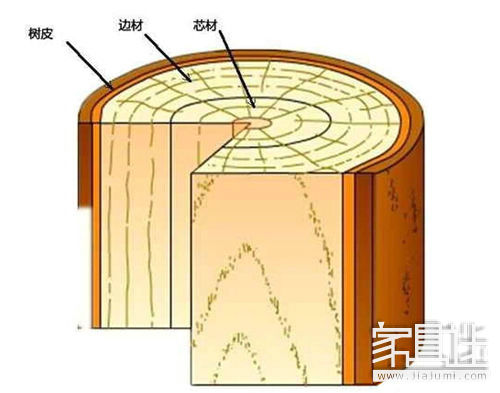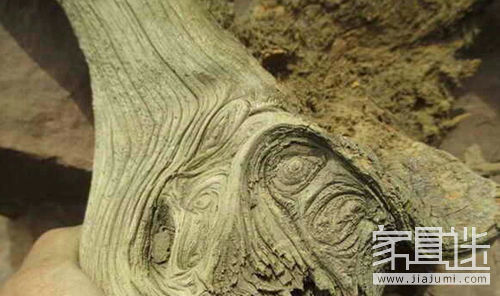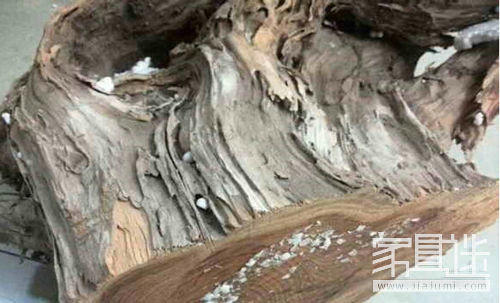
Nkwupụta nzuzo: Nzuzo gị dị anyị ezigbo mkpa. Companylọ ọrụ anyị na-ekwe nkwa igosipụta ozi nkeonwe gị na mgbasa ozi ọ bụla na-egosi na ọ bụla e ji ikike doo.
Recently, some friends are asking what is the old material and the old material. It seems that the friends (especially the newly involved friends) still do not understand the several major categories of the material of the yabai. Here, write this article. Answer questions for friends.
Some of the content in the text is to pick up other authors. There is no way to list them one by one. Thank you!
Before explaining the three types of materials: raw materials, old materials, and aged materials, let's review the basic structure of wood, which will give a deeper understanding of the terminology I will describe next.
In the xylem, the outer ring portion near the bark (usually lighter in color) is called the sapwood, which is raw and live; the core material refers to the xylem between the core and the sap (usually darker), the core The cells have lost their vitality.
As shown below:

As the name implies, raw materials are so-called live materials. The main feature is that the material has bark (sometimes the bark will be stripped) and sapwood (that is, the white skin we often say). The material is moist, moist, and some even leave the leaves on top. What we want to resist is this kind of material. Figure:

Please see, this one is found in Baidu pictures. The bark (the outermost skin) and the sapwood (white part) are all in this category. It can be summarized as: raw material.
Polar hydroxyl groups are present in the thuja wood, and bulk expansion and shrinkage occur when moisture enters or precipitates. This expansion and contraction of the opposite sex. The rate of change generally varies with the direction of the texture, causing the sapphire collection to be unstable, causing cracking and bending.
Related reading: Secret wood with English, numbers and other symbols
Before we talk about the old materials, we must first talk about the materials of Chen, because it is easier to understand in this order.
Chen Huan material means that the bark and sapwood of Thuja has been completely weathered and decayed on the cliff. Only the core material is left. Some people call it weathering material. Some people call it de-agglomerate. Some people call it relic. material.
As shown below:

Look, there is no bark, no sapwood, and the gully, which represents the years, is the vicissitudes of life, is tenacious. What we admire is such materials.
After finishing the aging, we are talking about old materials. The definition of the old material, by definition, refers to the stage after the death of the thuja on the cliff (note that this condition is on the cliff) until the bark and sapwood are weathered into the aging material. We say that the old material generally refers to the material that the bark and sapwood have not been finished after the death of Yabai.
Figure:

The time span of the old material is quite long. I remember a friend said that on the cliff behind his house, there was a dead cypress. When his father was very young, he saw that the yabai died there. It is. Now he is in his forties, and one day he found the dead cypress and found that the white skin is still there! That is to say, the decay of sapwood (white skin) is a very long process, at least for decades.
November 22, 2023
November 22, 2023
November 22, 2023
November 22, 2023
October 18, 2022
Email na ngwaahịa a
November 22, 2023
November 22, 2023
November 22, 2023
November 22, 2023
October 18, 2022

Nkwupụta nzuzo: Nzuzo gị dị anyị ezigbo mkpa. Companylọ ọrụ anyị na-ekwe nkwa igosipụta ozi nkeonwe gị na mgbasa ozi ọ bụla na-egosi na ọ bụla e ji ikike doo.

Dejupụta ozi ndị ọzọ ka ọ nwee ike ịkpọtụrụ gị ngwa ngwa
Nkwupụta nzuzo: Nzuzo gị dị anyị ezigbo mkpa. Companylọ ọrụ anyị na-ekwe nkwa igosipụta ozi nkeonwe gị na mgbasa ozi ọ bụla na-egosi na ọ bụla e ji ikike doo.